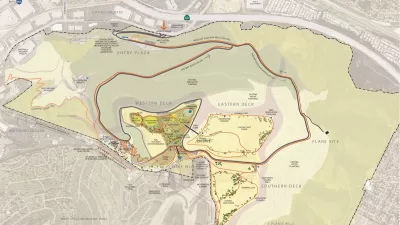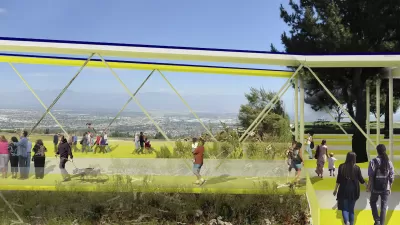State and local governments across the United States are beginning to divert waste from landfills and promote organic composting.
In 2010, 97% of America's 35 million tons of food waste went into landfills, while more than 60% of yard trim got recycled.
Waste management policy varies across communities in the U.S. The City of San Francisco has set out to achieve net zero waste by 2020, charging businesses and residents according to the amount of waste they produce. Since October 2011, Portland, Oregon has reduced its waste collection by 40%, picking up organic waste, including food, once a week and all other trash once every two weeks.
Driven by public policy and consumer demand for greener waste disposal, private waste management companies have begun divesting themselves from landfills and incineration sites and investing in recycling companies like Massachusetts-based Harvest Power, which converts solid organic waste into high quality soil or energy.
Smaller ventures like Washington, DC-based Compost Cab charge residents directly to collect their food waste and divert it to local gardeners and farms for composting.
Brenda Platt, who advocates composting for the DC-based Institute for Local Self-Reliance, believes that interest in recycling food waste is growing but that finding local composting sites is a challenge.
Of the nation's food retailers, Safeway has launched its own composting program: Safeway stores across the East Coast send their flower stems, coffee grinds and food waste to a return center in Upper Marlborough, MD, which then ships the remains to composting sites 100 miles away in Delaware and Virginia.
Decomposing food waste in landfills contributes to 16% of methane greenhouse gas emissions in the U.S., so municipalities and state governments are phasing in bans on food waste disposal despite the challenges of finding composting sites and reeducating the general population.
FULL STORY: Composting efforts gain traction across the United States

Alabama: Trump Terminates Settlements for Black Communities Harmed By Raw Sewage
Trump deemed the landmark civil rights agreement “illegal DEI and environmental justice policy.”

Study: Maui’s Plan to Convert Vacation Rentals to Long-Term Housing Could Cause Nearly $1 Billion Economic Loss
The plan would reduce visitor accommodation by 25% resulting in 1,900 jobs lost.

Why Should We Subsidize Public Transportation?
Many public transit agencies face financial stress due to rising costs, declining fare revenue, and declining subsidies. Transit advocates must provide a strong business case for increasing public transit funding.

Paris Bike Boom Leads to Steep Drop in Air Pollution
The French city’s air quality has improved dramatically in the past 20 years, coinciding with a growth in cycling.

Why Housing Costs More to Build in California Than in Texas
Hard costs like labor and materials combined with ‘soft’ costs such as permitting make building in the San Francisco Bay Area almost three times as costly as in Texas cities.

San Diego County Sees a Rise in Urban Coyotes
San Diego County experiences a rise in urban coyotes, as sightings become prevalent throughout its urban neighbourhoods and surrounding areas.
Urban Design for Planners 1: Software Tools
This six-course series explores essential urban design concepts using open source software and equips planners with the tools they need to participate fully in the urban design process.
Planning for Universal Design
Learn the tools for implementing Universal Design in planning regulations.
Smith Gee Studio
Alamo Area Metropolitan Planning Organization
City of Santa Clarita
Institute for Housing and Urban Development Studies (IHS)
City of Grandview
Harvard GSD Executive Education
Toledo-Lucas County Plan Commissions
Salt Lake City
NYU Wagner Graduate School of Public Service




























